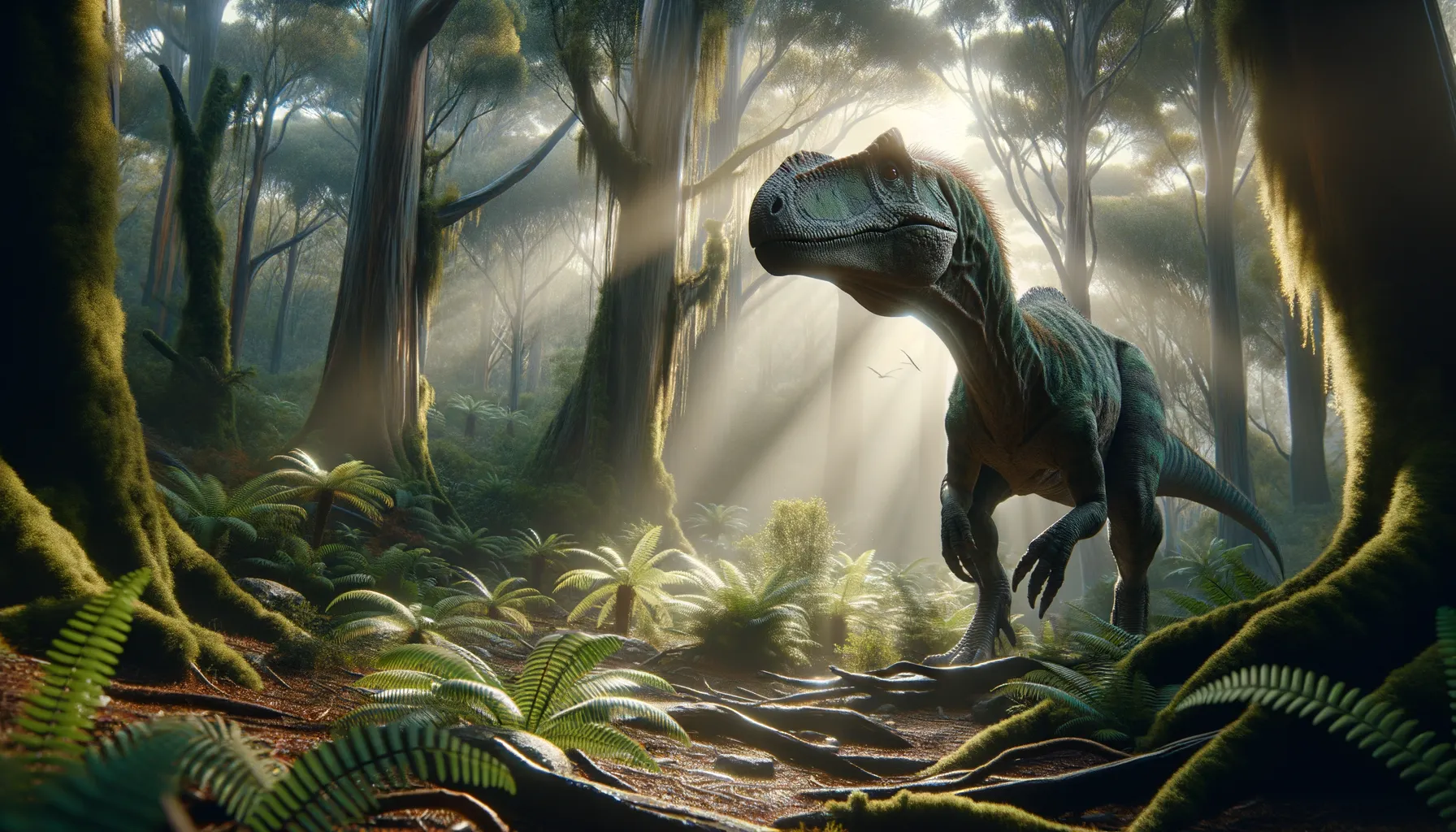
Qantassaurus
Swift herbivore with a beak-like jaw
Period
Cretaceous
Length
Measured roughly 3 meters from head to tail.
Height
Stood about 1 meter tall at the hips.
Weight
Weighed around 30 to 50 kilograms.
Qantassaurus was a small bipedal herbivore that roamed the ancient lands of what is now southeastern Australia during the Cretaceous period. It is known for its distinct jaw with a beak-like structure, ideal for chewing tough, fibrous plants. Its agile build and keen senses helped it navigate the dense undergrowth of the forests it inhabited.
Diet
Qantassaurus was herbivorous, feeding primarily on ferns, cycads, and conifers. Its beak-like jaws were well-adapted for slicing through tough plant materials.
Hunting
As a plant-eater, Qantassaurus did not hunt. Instead, it grazed throughout the forest floor. Its keen senses allowed it to detect predators and swiftly retreat to safety.
Environmental challenges
Qantassaurus faced various environmental challenges, such as drastic seasonal changes due to its habitat’s proximity to the ancient South Pole. These changes included long periods of darkness during winter. The dense vegetation made it difficult to spot predators, so it relied heavily on its speed and agility to evade them. Additionally, competition for food with other herbivores was a constant challenge, requiring it to be efficient in its grazing habits.
Speed
Qantassaurus was relatively quick on its feet.
Lifespan
Estimated to live up to 20 years.
First discovery
Qantassaurus was first discovered in Australia during the 1990s.
Fun Facts
- Qantassaurus was a small plant-eating dinosaur that lived during the Early Cretaceous period, around 115 million years ago.
- The dinosaur was named after the Australian airline Qantas, as its fossils were discovered in southern Australia.
- Qantassaurus was relatively small, about the size of a sheep, making it one of the smaller dinosaurs of its time.
- It is believed to have been a fast runner, using its speed to escape from predators.
- Qantassaurus belonged to a group of dinosaurs known as ornithopods, which were typically bipedal leaf-eaters.
- This dinosaur had a beak-like mouth that it probably used for cropping plants and leaves.
- The discovery of Qantassaurus adds to the fascinating tapestry of dinosaur life in the southern hemisphere.
Growth and Development
Qantassaurus grew relatively quickly to maximize its chances of survival against predators. It is believed that they reached maturity within a few years. Juveniles were likely cared for by adults until they were capable of evading danger on their own. Their development might have included seasonal growth spurts, capitalizing on times of plenty in their environment.
Habitat
Qantassaurus lived in temperate forests, which were cool and rich in ferns and conifers. These forests provided ample cover and food for this small herbivore. The environment was characterized by its proximity to the ancient Antarctic Circle, leading to long winter nights. Qantassaurus thrived by adapting to these unique and challenging conditions.
Interaction with other species
Qantassaurus likely interacted with various herbivores within its ecosystem, competing for similar plant resources. Predators, such as small theropods that lived in the same region, posed a constant threat. Symbiotic relationships with smaller creatures might have helped in cleaning or grooming, although much of its interactions remain speculative.
Natural lifespan
Qantassaurus likely lived up to 20 natural years.
Reproduction
Qantassaurus likely reproduced by laying eggs in secure, hidden nests within dense vegetation. The eggs would have been incubated naturally by the environment's warmth. Parental care might have involved guarding the nests until the young hatched. Once hatched, young Qantassaurus would have been vulnerable and likely stayed close to adults for protection.
Social behaviour
Qantassaurus might have traveled in small groups or herds for protection against predators. These social units could have provided alerts to nearby threats, increasing individual chances of survival. Group living might also have facilitated cooperative feeding strategies, helping them to manage food resources better.
Fossil locations
Fossils of Qantassaurus have been found in Victoria, Australia. The discovery was made in sedimentary rock formations that preserved many other Cretaceous period creatures. These sites offer insights into the conditions and ecosystem in which Qantassaurus lived.
